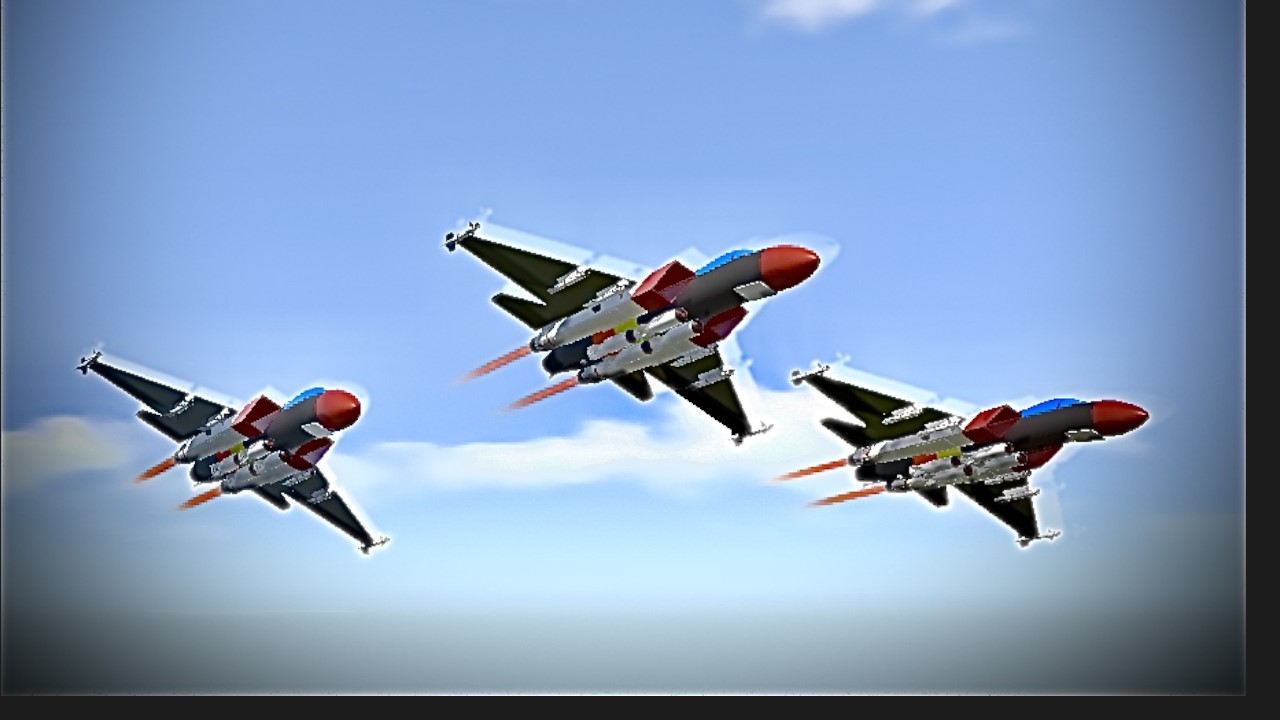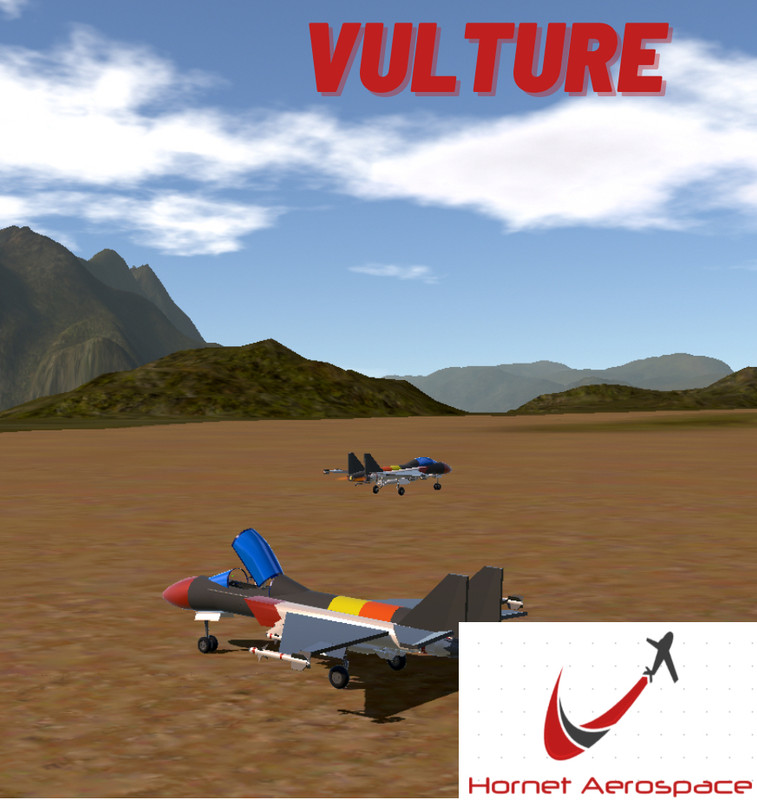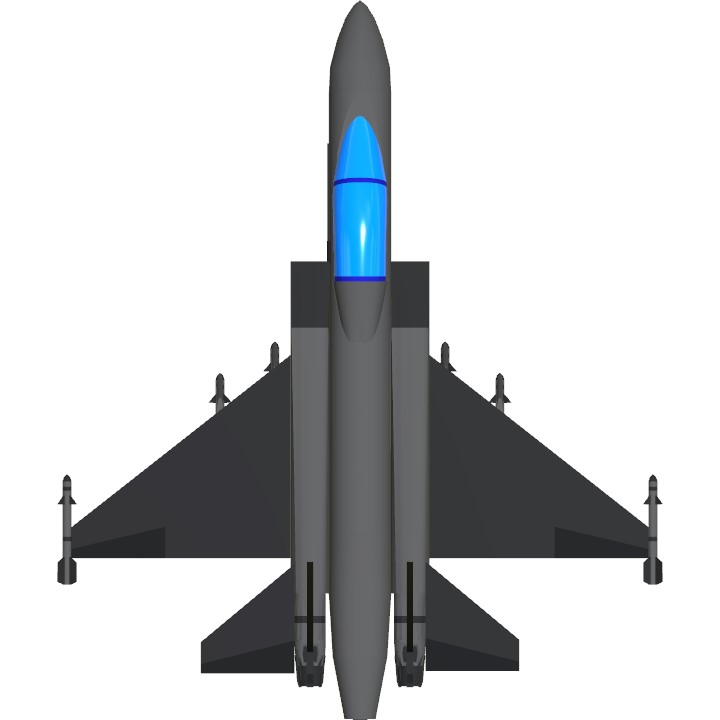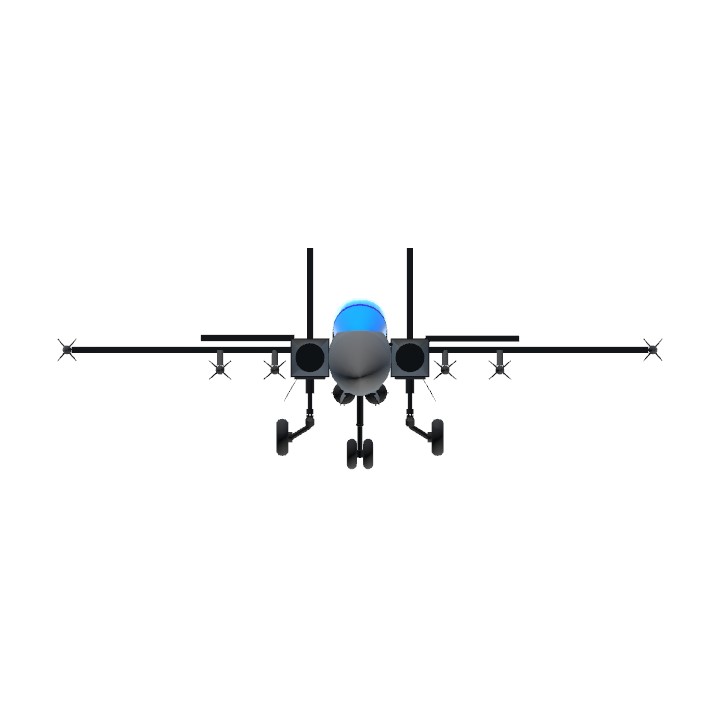Description
In the late 1960’s, It was believed that jet fighters would engage the enemy beyond visual combat, where dogfighting was out of the question. And so, for many decades, the HF-1 was an excellent fighter aircraft that sacrificed manoeuvrability for higher speeds and a sophisticated radar. Unfortunately, when it was first sent out into combat in the Krakabolian war, The radar on the HF-1 proved to be a dud, with less than 5% of the Interceptor radar-guided missiles actually hitting. This means that pilots were forced to get up close and personal to dogfights. The Hf-1 was a flying brick and was shot down by ancient 1950’s jet fighters. (Later the HF-1 would be switched to ground attack and ‘wild weasel’ missions and pilots found it to be an unstoppable machine. And once pilots were better trained for air-to-air combat in the HF-1, it shot down 100 enemy aircraft).
In response to the dilemma, Hornet Aircraft produced a new fighter that could still fly fast, at around mach 2, but made the wings bigger and lighter so that it was much more manoeuvrable. And so the Hf-5 Vulture was born. Jaw droppingly agile and equipped with six S232 Super Missiles, with a powerful radar and a 20mm Gatling Gun in case it was required to get up close and personal in a dogfight, the HF-5 was virtually unstoppable. Its excellent manoeuvrability, acceleration and climb rate has made it the best fighter jet in the world. It is also known for breaking the sound barrier (mach 1) in a vertical flight, due to its incredible thrust-to weight ratio.
AGs
1 for canopy
3 for arrestor hook.
Specifications
Spotlights
- This craft is curated
- Neruneten21 1.7 years ago
General Characteristics
- Created On iOS
- Wingspan 31.2ft (9.5m)
- Length 37.8ft (11.5m)
- Height 11.5ft (3.5m)
- Empty Weight N/A
- Loaded Weight 8,533lbs (3,870kg)
Performance
- Power/Weight Ratio 7.11
- Wing Loading 39.1lbs/ft2 (191.1kg/m2)
- Wing Area 218.0ft2 (20.3m2)
- Drag Points 2881
Parts
- Number of Parts 72
- Control Surfaces 6
- Performance Cost 581






@sus232 NP
@Neruneten21Fans YESSSSSSSS
Thanks so much
YOUR 3KKKKKKKKKKKKKK
CONGRATS
@sus232 I JUST UPVOTED EVERYTHING
@Neruneten21Fans YESSSSSSSS
@sus232 SOOOOO CLOSE TO 3K PLSSS
@Neruneten21Fans bros busy upvoting all my things lol
how did u get 3 jets in the thumbnail
this is beautiful
why is there like 10 kids with 0 points who upvoted
@Nerunuten21
@WADA
@Zaineman